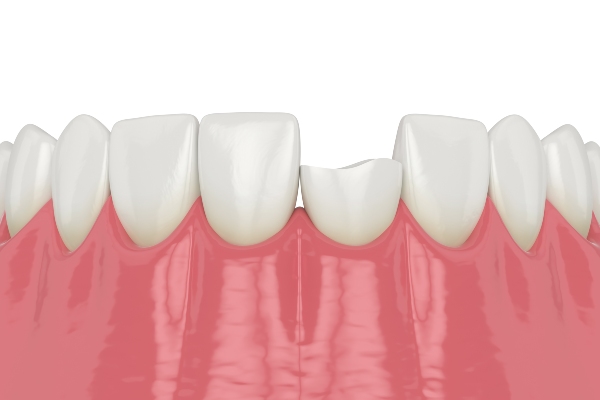4 Tips to Prolong the Longevity of Dental Bonding

One of the options to fix teeth imperfections such as chips, cracks, discolorations, and slim gaps is dental bonding. This procedure typically only takes 30 to 60 minutes, and it can greatly improve one's smile. However, teeth bonding does not last forever. It typically needs to be replaced every 10 years or so, although replacement may be required sooner if the teeth are not taken care of properly. If you have dental bonding, there are certain things you can do to extend the life of the bonded teeth.
Tips to prolong the lifespan of dental bonding
Dental bonding is used to cover up certain imperfections, although the material is also used for tooth-colored fillings. During the procedure to cover up the front of the teeth, a thin layer of resin is applied to the tooth and hardened with a laser or UV light. The material used for bonding is durable and stands up well to daily chewing and biting. However, certain things can cause the material to wear down or chip.
1. Practice good oral hygiene
Just like with your natural teeth, it is important to brush and floss your bonded ones. This should be done at least twice a day. You should also visit the dentist every six months to make sure everything looks good and to get a professional cleaning to remove tartar and plaque that have built up.
2. Stop smoking
There are many reasons to stop smoking, and prolonging the longevity of dental bonding is one of them. The nicotine from cigarettes, cigars, and chewing tobacco stains the bonded teeth and turns them a yellowish-brownish color. Whether it is using a nicotine patch or going through a cessation program, stopping this habit is beneficial in many ways.
3. Limit stain-causing foods and beverages
Along with smoking, there are numerous things that cause bonded and natural teeth to stain and discolor. Common culprits include red wine, coffee, colas, and black tea. Certain foods, such as dark-colored berries, are also tough on the teeth.
It may be hard to completely avoid stain-causing things, but try to limit them. To reduce the chances of staining, swish water around the teeth after drinking coffee, wine, or tea. If at all possible, brush right after you are done consuming a dark-colored beverage.
4. Stop bad habits
Although dental bonding can withstand most types of food, it can break on hard items. If you chew on pens, nails, or ice, or if you have a habit of trying to open packages or bottles with your teeth, you should stop. If you do not, there is a good chance you will be visiting the dentist to have your teeth repaired or replaced.
Good candidates for the procedure
One of the most important factors that determine whether or not a patient is a good candidate for dental bonding is their willingness to comply with the recommendations for proper home care. However, there are other requirements you must meet before your dentist will move forward with this type of treatment.
First, the damage to the tooth must be cosmetic in nature or otherwise relatively minimal. Teeth that are irregularly shaped or discolored are some of the most common reasons a patient will choose dental bonding. Minor chips and cracks can also be repaired using this technique. However, if the damage to the tooth is extensive, and requires more than a surface-level repair, other treatments may be required.
The affected teeth and the surrounding gums must be in overall good health before the treatment begins. This means there can be no signs of untreated decay, infection, or disease. In some situations, a dentist can address these issues first and then apply dental bonding to the tooth.
Dental bonding can last for many years with proper care but it is not the most durable solution to an unsightly or damaged tooth. For this reason, dentists rarely use it for repairs on teeth toward the back of the mouth unless it is part of the process to fill a cavity. It is also not recommended for patients with severe bruxism, which is the habit of clenching or grinding your teeth. This can quickly damage dental bonding.
Conclusion
Dental bonding can improve your smile and self-confidence by covering up minor dental flaws. With proper care, it can last up to 10 years. Bonded teeth can handle normal wear and tear, but there are certain things that can damage them and require replacement.
Request an appointment here: https://gkdentaloffice.com or call GK Dental PC at (617) 826-6075 for an appointment in our Everett office.
Check out what others are saying about our dental services on Yelp: Dental Bonding in Everett, MA.
Recent Posts
A dental bonding treatment is capable of restoring damaged teeth. Most people have dental chipping and fractures after a sports accident or an adventure mishap. This can cause low self-esteem. If you want to know how a dentist can use dental bonding treatment for dental repair, here are the details.This type of dental restoration can…
There are some cases where a stained or chipped tooth can be fixed with dental bonding or contouring. While these issues can be more severe and so require a different solution, something like an uneven edge or unsightly spot can often be treated without more invasive procedures that can affect the entire mouth.This procedure enhances…
If you're considering a form of cosmetic dentistry to fix a damaged tooth, then you might want to consider an option such as dental bonding to restore your tooth. Cosmetic dentistry covers a whole range of procedures and applications designed to make your smile look the best it can be. While most folks know about…
Dental treatments like dental bonding are not just about enhancing the appearance of your teeth and giving you a new smile. They can also improve your oral health, prevent dental problems, and keep your mouth in good shape. Dental bonding is a straightforward and cost-effective process. If you are thinking about dental bonding, continue reading…


